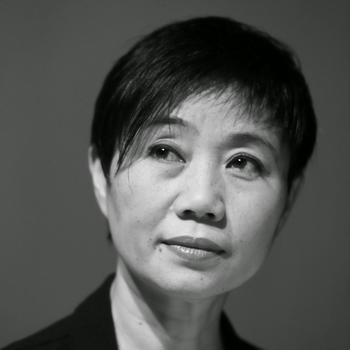Tian Mansha

Interweaving Performance Cultures
Fellow 2011/12, 2017/18
Tian Mansha is a Chinese chuanju (‘Sichuan opera’) performance artist and director. She serves as Vice President of the College of Xiqu Shanghai Theatre Academy, where she also teaches as a professor. Mansha has won several Chinese theatrical performance awards and has participated in many international arts exchange activities, significantly contributing to bringing traditional xiqu (‘Chinese opera’) into the contemporary and experimental realm. In addition to her own artistic work, Mansha has been very active in the field of artistic education and management. A pioneer in the avant-garde development of chuanju, she is also a key figure in the contemporary development of Chinese xiqu performance, directing and education.
Research Project
Exploring the Different Methods of Portraying a Role
The word 角色 in Chinese (pronounced as jiǎo sè, meaning ‘role’ in English) refers to the figure played by a performer in a play, movie or television drama. Performers from different cultural backgrounds follow different methods of portraying roles in their respective societies. However, in Chinese traditional opera (xiqu), roles are not only divided according to the ‘type’ of the figure and the characteristics of the performance style. They are also determined in accordance with the hangdang (‘role type’) specialization of a particular performer. The hangdang system, unique to xiqu, is a classification and categorization system outlining rules for performance techniques by particular role type. In xiqu, performance works have always been transmitted orally from teacher to student; therefore, there is no definitive training methodology regarding character development in this tradition.
Using this opportunity for cross-cultural research, I intend to seek out and study the relationship between ‘social roles’ and ‘theatrical roles,’ as well as the various methods of portraying these roles. I further wish to explore how to learn from and integrate the different approaches to training, and how to apply elements from Chinese traditional opera in the portrayal of new roles.
For example, how are characters portrayed through voice, body, text, eyes, facial expressions, rhythm and breath? I believe that the use of chi, in particular, is a critical link to portraying a role, and that shifts in expression and moods are conveyed through the adjustment and transmission of chi.
Recommended Publications
- Mansha, T. and Odenthal, J. (eds.), Lebendige Erinnerung – Xiqu. Zeitgenössische Entwicklungen im chinesischen Musiktheater, Berlin: Theater der Zeit, 2006.
- Wenzhang, W., Knopp, H. G. and Odenthal, J. (eds.), Zeitgenössische Künstler aus China. Positionen 3. Göttingen: Steidl, 2010.
- Mansha, T. and Jost, Torsten (eds.), Regiekunst heute: Stimmen und Positionen aus China [The Art of Directing Today: Chinese Perspectives and Voices]. Berlin: Alexander Verlag, 2018.
